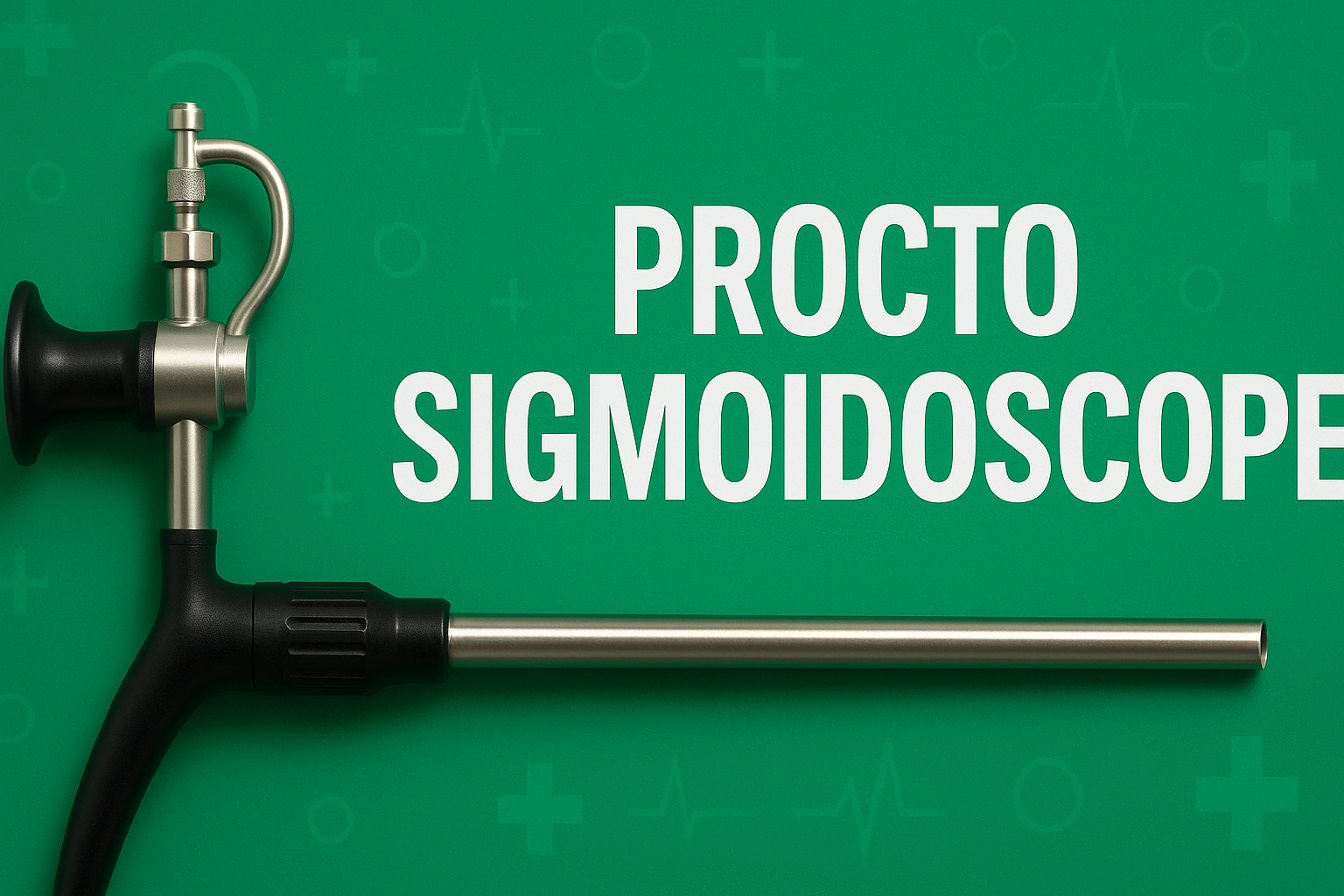Understanding the Rigid Sigmoidoscope: A Vital Tool in Modern Proctology
In the field of gastroenterology and proctology, accurate diagnostic tools are paramount to identifying and treating lower gastrointestinal issues. One such tool that has proven indispensable is the Rigid Sigmoidoscope This medical instrument is used by healthcare professionals to examine the rectum and the distal part of the colon with high precision. The rigid sigmoidoscope offers a clear and direct view of the lower bowel, allowing for quick detection of abnormalities such as tumors, polyps, inflammation, or hemorrhoids. With advancements in medical technology, modern versions, like the rigid video procto-sigmoidoscope, have enhanced both diagnostic accuracy and patient comfort.
What is a Rigid Sigmoidoscope?
A rigid sigmoidoscope is a straight, inflexible tube usually made of stainless steel or medical-grade plastic, which is inserted into the rectum to visualize the sigmoid colon. It is typically 25-30 cm in length and equipped with a light source to illuminate the intestinal walls. The procedure, known as rigid sigmoidoscopy, is minimally invasive and often conducted in outpatient settings without the need for anesthesia.
Unlike flexible sigmoidoscopes, which can navigate bends in the colon, rigid models are limited to the lower parts of the large intestine. However, their sturdiness and simplicity make them ideal for focused examinations, especially when evaluating localized symptoms such as rectal bleeding, pain, or changes in bowel habits.
Historical Significance and Evolution
The rigid sigmoidoscope has a long history, tracing back to the early 20th century when direct visualization of the rectum was a groundbreaking advancement. Over time, it evolved from rudimentary devices to sophisticated tools incorporating fiber optics and video capabilities. The transition to video-enabled rigid sigmoidoscopes marked a significant milestone, offering enhanced imaging, better documentation, and the possibility of telemedicine consultations.
Though flexible sigmoidoscopy and colonoscopy have gained popularity for their extended reach, the Rigid Sigmoidoscope remains a preferred choice for certain procedures due to its ease of use, affordability, and effectiveness in targeted examinations.
Procedure and Patient Experience
Rigid sigmoidoscopy is generally a quick and straightforward procedure. The patient is usually asked to lie on their side, often in the left lateral position, with knees drawn toward the chest. After a digital rectal exam, the doctor inserts the lubricated sigmoidoscope into the rectum and gently advances it to examine the lower bowel.
The procedure typically takes less than 10 minutes. While some patients may experience mild discomfort or pressure, the rigid sigmoidoscope does not usually cause pain when used properly. No sedation is required, and most patients can resume normal activities shortly afterward.
Doctors often use air insufflation to expand the colon slightly during the procedure, allowing for a clearer view of the mucosal lining. Tissue samples (biopsies) can be taken if any abnormalities are observed, making this an invaluable diagnostic tool.
Clinical Applications
The rigid sigmoidoscope is primarily used to diagnose:
-
Hemorrhoids
-
Anal fissures
-
Inflammatory bowel disease (IBD), including ulcerative colitis
-
Polyps and rectal tumors
-
Rectal bleeding or discharge
-
Chronic constipation or diarrhea
It is also used post-operatively to monitor healing in patients who have undergone rectal surgery. In emergency settings, it allows for rapid assessment of lower GI bleeding or foreign bodies.
In countries with limited access to advanced imaging and endoscopic tools, the rigid sigmoidoscope plays a crucial role in routine screenings and early detection of colorectal cancer.
Advantages of Using a Rigid Sigmoidoscope
Despite its simplicity, the rigid sigmoidoscope offers several benefits:
-
Cost-effective: It requires minimal infrastructure and can be used in basic clinical setups.
-
No need for sedation: The procedure is done without anesthesia, reducing risks and recovery time.
-
Quick and efficient: Most procedures take just a few minutes, making it ideal for outpatient settings.
-
Targeted examination: It allows precise visualization of the rectum and distal sigmoid colon.
-
Useful for follow-up: Especially in patients with chronic conditions needing regular surveillance.
Moreover, the addition of video capabilities in modern versions allows better teaching, recording for medical documentation, and consultations with specialists remotely.
Rigid Sigmoidoscope in the Era of Modern Medicine
In the age of robotic surgeries and AI-powered diagnostics, it might seem that older tools like the Rigid Sigmoidoscope could become obsolete. However, its utility continues to shine in specific clinical scenarios. For instance, in rural clinics or developing countries, where resources may be limited, rigid sigmoidoscopy remains a dependable and affordable solution.
Even in high-tech hospitals, it’s not uncommon for proctologists and colorectal surgeons to rely on this device for quick diagnostics or post-surgical follow-ups. The simplicity and effectiveness of the rigid sigmoidoscope make it an enduring piece of medical equipment.
Training and Usage
Medical professionals trained in colorectal examinations are taught how to use the rigid sigmoidoscope early in their education. Proper technique is essential to ensure patient comfort and maximize diagnostic yield.
Sterilization and maintenance are also key. The device should be thoroughly cleaned and disinfected between uses to prevent infections. Clinics and hospitals usually follow strict protocols to ensure safety and hygiene.
Limitations and Considerations
While the rigid sigmoidoscope is incredibly useful, it does have limitations:
-
Limited reach: It cannot examine beyond the sigmoid colon.
-
Discomfort: Although usually mild, some patients may find the experience unpleasant.
-
Not suitable for all conditions: For issues suspected in the upper colon, a flexible sigmoidoscope or colonoscopy is more appropriate.
Despite these limitations, when used judiciously and in the right clinical context, it remains a first-line diagnostic tool.
Conclusion
The Rigid Sigmoidoscope is a time-tested, reliable, and efficient diagnostic tool in modern proctology and gastroenterology. While medical technology continues to advance, this simple yet effective instrument holds its place as an essential component of lower gastrointestinal diagnostics. Its affordability, ease of use, and diagnostic accuracy make it particularly valuable in both urban hospitals and rural health centers around the world.
Understanding its role and proper application can help both patients and healthcare providers make informed decisions about lower GI health. Whether for routine screening or evaluating troubling symptoms, the rigid sigmoidoscope continues to serve as a cornerstone of colorectal examination.







